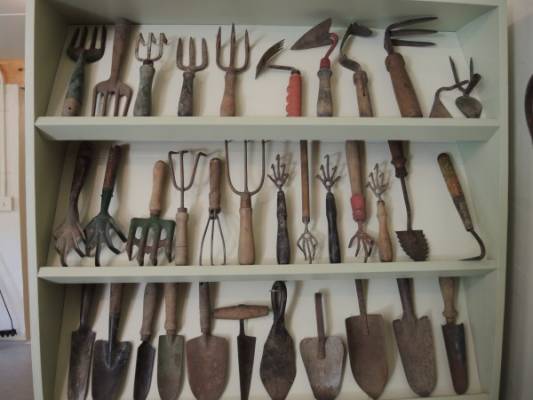How to care for garden tools
With summer on its way, it’s time to get your garden in order. Kelly Friel, from trade tool and equipment suppliers Zoro, shares her tips for keeping your garden tools in top condition all season long.
Gardening is seeing a huge resurgence in popularity. The UK’s overall garden retail market value is estimated to be a whopping £5 billion, thanks to a 29% increase in health-conscious celebs and millennials are embracing the great outdoors and growing their own produce (AirTasker).
However, failing to properly look after your gardening tools can make this wholesome activity harder and more expensive for budding and seasoned gardeners alike. Below are my tips for how to maintain, store and repair your gardening equipment.
Maintenance
It’s important to clean your tools after every use but remember to regularly check your tools for wear and damage, even if they’ve been sitting unused in your shed for a while. If you have any power tools, you’ll need to take extra care to check these regularly as hedge trimmers, lawn mowers and other motorised equipment could quickly become unsafe to use, even if it only seems that there are minor issues with them.
To clean your tools, remove soil and loose dirt with a brush. If you need to use soapy water for heavy mud or grime, use a cloth rather than submerging them and make sure your tools are thoroughly dried to prevent rust and rot. Spray metal surfaces, including blades, with oil to prevent rust from forming and rub bare wooden parts with a rag soaked in linseed oil to avoid splintering. Following these maintenance steps help keep your tools safe to use and can even make them last longer.
Repairs and restoration
If your tools aren’t in perfect condition, there are a few things you can do to get them back in fine working order. Rusty tools can be restored by scrubbing with wire wool to remove the surface coating but be careful not to wear away the steel underneath as it can make your tools thinner and weaker. Similarly, if your wooden handles have become rough, use sandpaper to smooth them but be careful not to scrub too much wood away.
For dull tools, you can use a grinder to keep your tools sharp and efficient if you feel confident using one. However, a hand-held file can work just as well to sharpen your trowels, shovels, and blades.
A tool with a wobbly handle could mean that the connecting hasp has become loose, or the wood has worn away unevenly. Secure the head of the tool in a vice and use a drill or hammer to remove the handle from the hasp, sand down the wood until it is even, then put the handle back into the hasp and tighten it up.
Broken or snapped handles should be replaced, as even a well-repaired handle will be weak and more likely to break again. You can replace a tool handle by loosening the hasp, removing the broken handle and popping in a new one, then closing it up again as above.
Storing
Storing tools properly not only protects them from rust and weather damage but can make the right tool easier to find when you need it. A properly organised shed or tool cupboard is also more efficient space-wise, giving you more room for storage, and prevents accidents caused by falling items or tripping.
Invest in shelving, racks for poled tools, and hooks for trowels and secateurs. One stylish way to tidy your garden storage that is popular at the moment involves nailing an old wooden pallet to the wall to hang your tools off. This keeps them off the floor, dry, and easy to grab when needed.
With the tips in this guide, you can make your tools last longer and perform better, saving you time and money best spent on working your garden.

